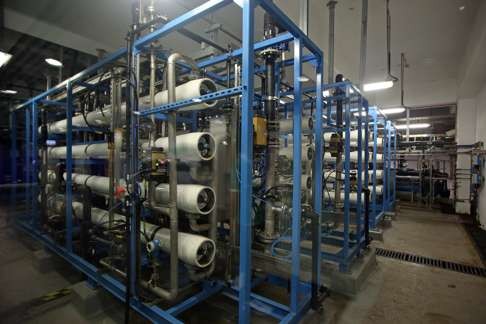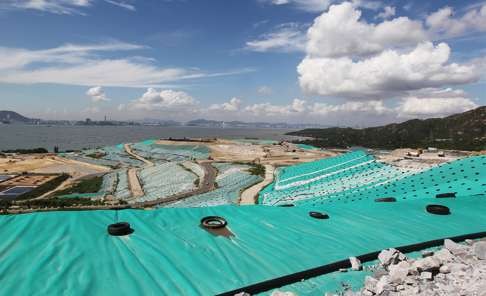
Slimy, grimy and good for the city: Hong Kong plant treating 1,200 tonnes of sludge daily to welcome the public
State-of-the-art facility to feature guided tours, rooftop garden and spa services
A waste treatment facility located next to a Hong Kong landfill is due to open to the public and reveal that it offers even more than processed sludge.
The facilities are due to open to the public free of charge on June 29. An online reservation is required in advance.
Four spa sessions of between 90 minutes and two hours will be available daily, with each time slot accommodating 50 people.
Tourism sector lawmaker Yiu Si-wing doubted if it would appeal to overseas tourists, given its remote location, but he believed it would be popular among Hongkongers, especially as everything was free.
Currently it absorbs 1,200 tonnes of sludge daily – the output of the city’s 11 sewage treatment plants. It reduces the volume of sludge by 90 per cent before the waste by-product is transported to the adjacent landfill.
The facility can treat up to 2,000 tonnes of sludge daily, a figure projected to be achieved by 2030.
The publicly funded project adopts a “full life cycle” approach as it employs renewable energy, mainly from heat discharged during the incineration of sludge.

Steam generated from the incineration process is then used to drive a turbine capable of producing enough electricity to power not just the facility but also 4,000 households.

Wastewater is also processed in the project through a seawater desalination plant and reused for irrigation, flushing and cleansing purposes.
Speaking at the opening ceremony, environment secretary Wong Kam-sing said the “waste-to-energy” model was in line with the government’s efforts to reduce its carbon footprint and combat climate change.
Asked if gas emissions would harm the health of nearby residents, Wong stressed the facility was up to “modern standards”. A stringent monitoring system was in place and relevant figures would be uploaded to the Environmental Protection Department’s website for public scrutiny.
District councillor Lung Shui-hing, who chairs the environment committee of Tuen Mun District Council, said she was not worried about any adverse health impact from the plant’s operation, saying the government had promised that emissions would abide by European Union standards.
But fellow Tuen Mun councillor Ho Hang-mui, who had opposed construction of the plant, was less optimistic, saying she would collect air samples for laboratory testing.

The estimated annual operating cost is HK$220 million for the next 15 years. French waste management company Veolia is overseeing the project’s design, construction and operation.

